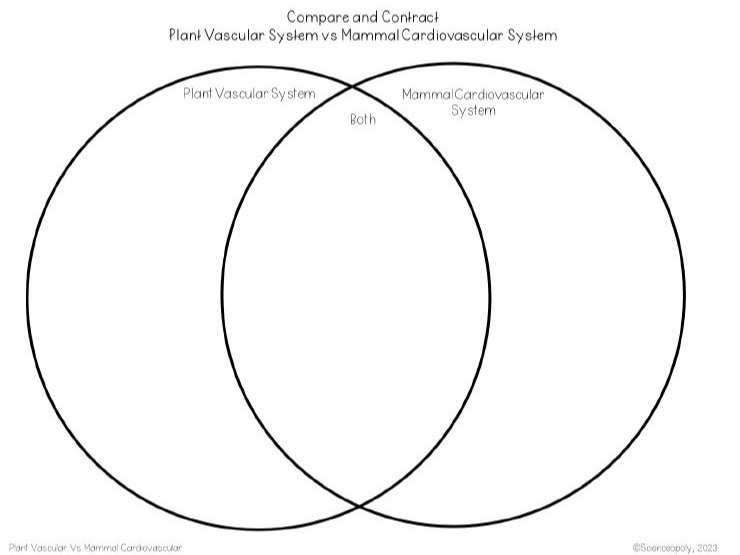Plant and Animal Body Systems Teaching Resource
I love teaching about body systems. I love diving into how the body works, from the single cell to the complex nervous system. I especially love helping students see the connections between different systems and across Kingdoms.
One of my favorite moments is when students start to note the similarities and differences between the plant vascular system and the mammalian cardiovascular system. Often I would try to teach these two units back-to-back, but that doesn't always work out. So eventually I created a foldable note-taking guide where students could jot down basic notes about both systems, along with a Venn Diagram to really lay out the comparisons.
The foldable has 2 side-by-side flaps so that students can gather information about the plant vascular system on one side and information about the mammalian cardiovascular (or circulatory) system on the other side. In this way, students see pretty quickly that these two systems have the same purpose and similar features, but operate in very different ways.
The Venn diagram is a handy graphic organizer tool that allows students to clearly visualize the similarities and differences between the systems. Both the foldable and the Venn diagram fit nicely into a interactive notebook.
Over the years, this became a pretty handy resource because it could kind of stand alone, acting as a one-off assignment if needed. Sometimes I had the students create the foldable before teaching about either system (plant or animal). They’d place it in their interactive notebooks and after finishing each of the units, we’d turn back to the foldable and fill-in the information. Once both units were over, we’d complete the the Venn diagram, bringing everything full circle.
Other years, I would wait until both units were done, then give the entire packet at one time. This made for a great review. Students would look back through their notes in their interactive notebooks and work together to complete both pieces.
I’ve also used it as a sub plan resource, even before having taught both units! Granted, I do love using it more if we’ve studied both systems together, but it’s such an easy tool to use that I found I could leave it for a sub when I was in a bind and let students complete it as an independent research assignment, relying on either textbooks or online sources to find the information.
If you are interested in trying the resource out in your class, you can grab it here for free!




